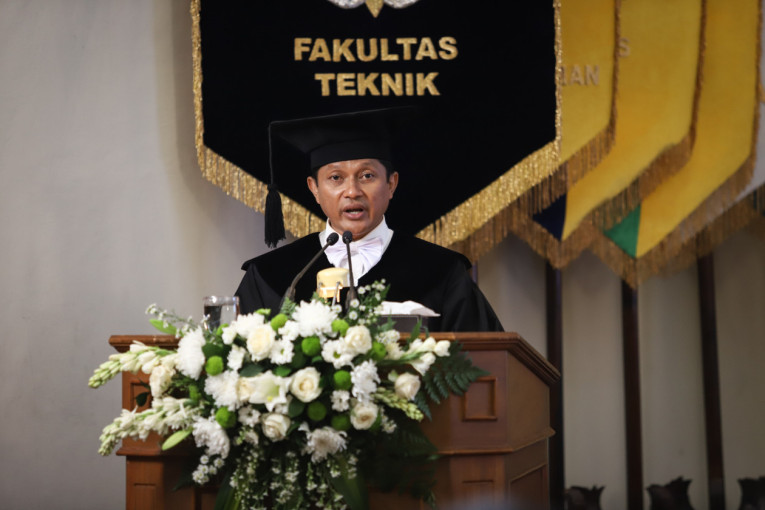
Professor Fransisco Danang Wijaya asserted that to achieve Indonesia’s net-zero emissions goal by 2060, the role of power electronics technology is paramount.
It is a pivotal enabler, ushering in eco-friendly electric energy from renewable sources such as solar and wind to supersede traditional fossil fuel power generators.
On the consumer front, power electronics technology has paved the way for highly efficient electric energy usage, opening avenues for energy conservation.
Addressing the audience at the UGM Senate Hall on Thursday (Jan. 11) during his inauguration as a professor of power electronics at the UGM Faculty of Engineering, Professor Wijaya highlighted the vast challenges and opportunities accompanying power electronics product development.
These opportunities span diverse sectors, including renewable energy, electric vehicles, industries, medical equipment, and household appliances. The professor emphasized that establishing a robust ecosystem in power electronics is crucial to fostering the active participation of many stakeholders.
“The continuous pursuit of collaboration between universities, researchers, businesses, government bodies, and domestic industries is essential, along with fostering collaborations with more advanced countries in the power electronics field,” he proclaimed.
Professor Wijaya envisioned a dynamic domestic power electronics ecosystem, emphasizing the nurturing of new startups within the power electronics sector as the key to effective competition on the global stage.
Citing data from Precedence Research for 2023, he noted that the global power electronics market, valued at USD 19.91 billion in 2022, is projected to reach approximately USD 32.59 billion by 2032, marking a growth rate of 5.1% from 2023 to 2032.
Delving into the factors influencing these figures, Professor Wijaya attributed them to the world’s increasing concern for environmentally friendly and clean energy. This concern is closely tied to power electronics-based devices such as inverters, power converters, adapters, and battery chargers.
He underscored the uniqueness of power electronics technology, emphasizing its dissimilarity to the flexible and versatile nature of information technology or other service-based industries.
He stressed the need for additional effort in the research phase and formulating a well-thought-out master plan for mass production.
The main products are hardware-based, so the master plan must focus on the physical product perspective, including circuit development, surface mount technology (SMT), efficient mass production, certification capabilities, and other post-production activities.
“Drawing insights from Taiwan’s success story, they had long recognized the prospects within the power electronics industry. Their well-formed master plans and strategic investments, particularly in semiconductors—core components in power electronics product development—have propelled them to the forefront of global power electronics innovation,” he said.
“Silicon, SiC, and GaN are among the significant investments that have made Taiwanese companies the leaders in global power electronics product development.”
Author: Agung Nugroho
Photographer: Donie Trisfian

